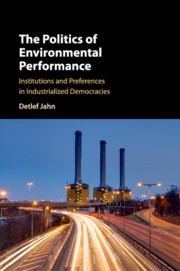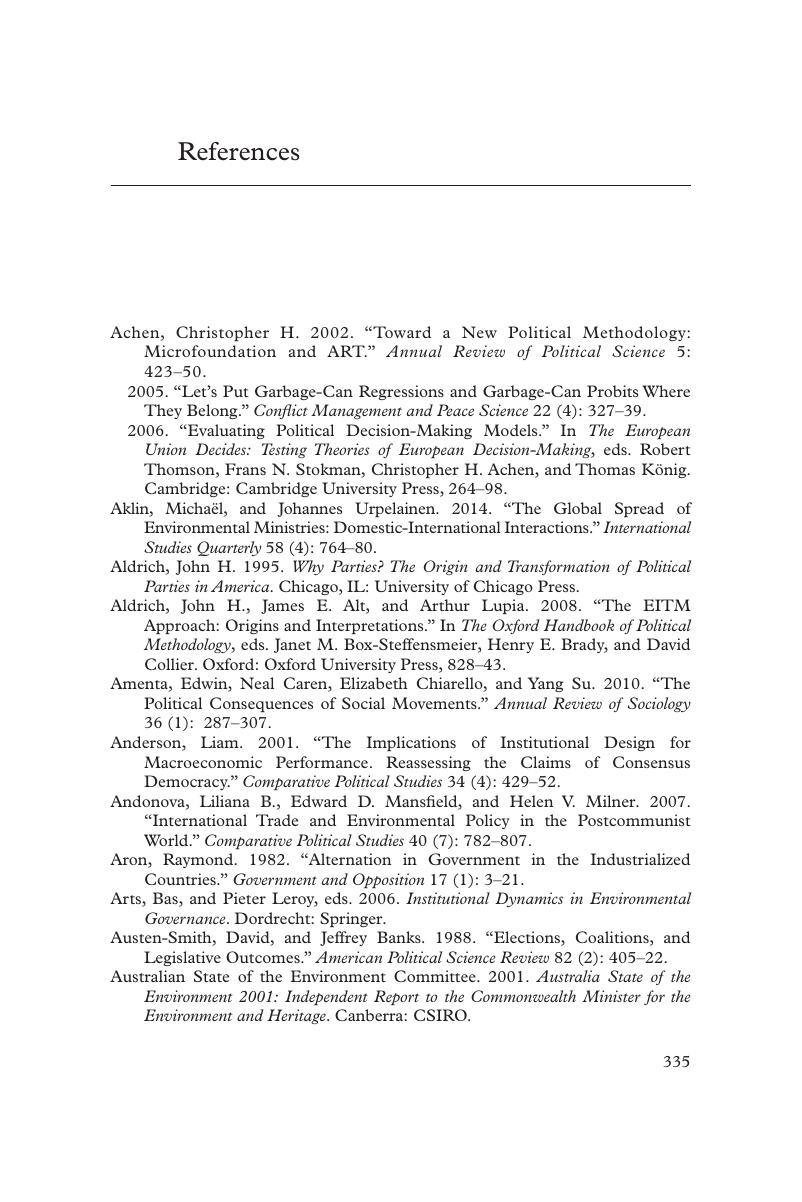 The Politics of Environmental Performance
The Politics of Environmental Performance Book contents
References
Published online by Cambridge University Press: 27 October 2016
Summary

- Type
- Chapter
- Information
- The Politics of Environmental PerformanceInstitutions and Preferences in Industrialized Democracies, pp. 335 - 364Publisher: Cambridge University PressPrint publication year: 2016


